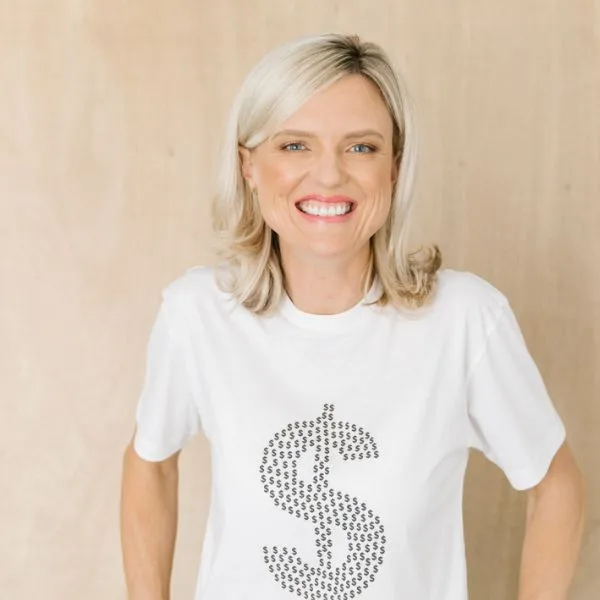Savings accounts with restrictions
These accounts offer extra interest each month you save money and make no (or limited) withdrawals.Compare other products
We currently don't have that product, but here are others to consider:
How we picked theseHow the Finder Score helps you find a better savings account
The Finder Score is a simple score out of 10. The higher a savings account's score, the better we think it is for the average customer.
We score each savings account in our database of hundreds based on a data-driven methodology with 2 main criteria: Does the account offer a high interest rate? And is it easy for savers to actually earn that rate?
How do savings accounts you can't touch work?
Savings accounts with restrictions are called bonus saver accounts. They offer a higher interest rate each month you make limited or no withdrawals, make regular deposits and /or grow your balance. This creates an incentive to keep your money in the account and to keep adding to it.
In order to activate this bonus interest rate each month you will need to satisfy certain requirements, which may include one or a combination of the below:
- Depositing a specific minimum amount into your account each month.
- Making a minimum number of deposits each month.
- Making no or limited withdrawals each month.
- Maintaining a minimum account balance or growing your balance each month.
What happens when I withdraw from my savings account?
If you don't meet the conditions of the savings account, you'll earn a much lower interest rate on your balance for that month. This could be as low as 0.01% p.a! The threat of a really low interest rate could be enough motivation for you to keep your savings balance untouched.
As the name suggests, savings accounts are designed to help you save money, not spend it. If you want an account that allows easy access to your money, we suggest opening an everyday transaction account.

"Some savings accounts state your balance has to grow each month to earn bonus interest. This means you're allowed to make withdrawals throughout the month, but you need to replace the money (plus a bit extra) before the end of the month. So even though you can make withdrawals, it's a good idea to restrict them because it might be difficult to replace the money by the time the month is coming to an end."
How to compare savings accounts you can't touch
- Check the maximum interest rate you can earn on each account. Remember that you will only earn this high rate if you satisfy all the account terms and conditions each month, so check out the base interest rate that will apply if you miss a deposit or make too many withdrawals.
- Check if there are deposit requirements. Is there a minimum amount you need to deposit each month in order to receive the best rate? Also check to see whether there is a minimum deposit required to open an account.
- Check if there are limits on the number of withdrawals you can make. Many accounts will limit the number of withdrawals you can make each month and this limit could possibly be as low as zero. If you fail to meet this requirement, you won’t earn any bonus interest for that month.
- Linked account requirements. Some banks will require you to also open a linked transaction account with them in order to open a bonus saver account. If this is the case, make sure the transaction account is suited to your needs and doesn’t have any hidden fees.
- Check for any hidden account fees. Exorbitant bank fees can quickly defeat the purpose of any bonus interest earned on an account, so read the fine print to make sure you’re aware of any ongoing fees, withdrawal fees and other transaction charges.
- How accessible is your cash? Check to see whether your account can only be managed online or whether you also have branch, mobile banking and phone banking access. Easy accessibility to customer service and support is another important factor.
Locked term deposits
Compare other products
We currently don't have that product, but here are others to consider:
How we picked theseFinder survey: How long are Australians holding term deposits?
Response | |
|---|---|
| I am not planning to get a term deposit | 61.37% |
| 12 months | 16.26% |
| 6 months | 6.29% |
| 24 months | 4.31% |
| 9 months | 3.77% |
| 3 months | 3.5% |
| 60 months | 1.98% |
| 36 months | 1.26% |
| 48 months | 1.26% |
How do term deposits you can't withdraw from work?
A term deposit is another type of savings account that you can't withdraw from. Term deposits are more restricting than savings accounts, as you need to lock your money away for a certain length of time and can't access it at all until the term is finished.
If you don't trust yourself to not dip into your savings account for impulse puchases, a term deposit might be a better fit as these accounts are actually locked.
If you do need to make a withdrawal, you'll need to give 31 days' notice and pay a penalty (usually this is in the form of lost interest). You can choose to lock your money away in a term deposit for one month up to five whole years at a time and the term deposit will pay a fixed rate of interest for the length of the term.
Benefits of locking your money in a term deposit
There are a couple of key benefits to term deposits. First, you get the security of a fixed interest rate and a guaranteed return on your investment. If interest rates drop while your money is locked away in a term deposit, you won’t be affected.
Second, these accounts are set up in a way to discourage you from dipping into your savings balance. You typically can’t access the funds in a term deposit without having to give 31 days' notice and paying a sizable fee, so any money you deposit is safe from the risk of impulse-buying and unnecessary spending.
On the other side of the coin, term deposits are not all that convenient if you ever need fast access to your funds in an emergency and you also won’t be able to benefit from any interest rate rises that occur until your deposit matures.
How to compare term deposits you can't touch
Consider the following features when comparing the pros and cons of term deposit accounts:
- The fixed interest rate. As the table above shows, interest rates can vary greatly between banks and depending on the term you choose. Look around for the best interest rate you can find – but make sure there are no unexpected fees attached.
- When interest is calculated. Check to see whether interest is calculated on the account daily, monthly, quarterly or yearly. The more often interest is calculated, the more your balance will grow as you'll earn interest on your interest.
- Compare the terms and conditions. When comparing accounts, make sure you evaluate the features of accounts with the same term length. For example, only compare six month term deposits with other six month term deposits. If your bank doesn’t offer the term you want, look elsewhere.
- Check the fees for early withdrawal. It’s worth checking what sort of fee you will incur if you need to withdraw your money before the term ends.
- Check where interest is paid on maturity. Is the interest you earn paid back into the same account or into a different account? Do you need to open a linked account with the same financial institution to receive interest payments?
- Are there loyalty bonuses? If you want to re-invest your money into another term deposit after your first deposit matures, will you be rewarded for your loyalty with a bonus interest rate?
FAQs
Karen Eley is the founder of Women Talking Finance, which provides money coaching and financial literacy and education services. An experienced and former financial adviser who has worked in financial services industry for 22 years, Karen is a Certified Money Coach (CMC), holds a Bachelor of Accounting and an Advanced Diploma in Financial Planning and CFP.
Ask a question
More guides on Finder
-
Alex.Bank term deposit with Qantas Points: Is it worth it? My expert take
You can score up to 25,000 Qantas Points, but is the interest rate good enough?
-
Compare term deposit rates from the Big Four banks
Compare term deposit rates from Australia's Big Four banks and see if you can find a better rate with a smaller bank.
-
When will term deposit rates go up?
When can you expect term deposit interest rates to increase? Find out in this handy guide.
-
Are term deposits safe?
They offer a fixed interest rate (so you don't need to worry about any market volatility) and your deposit up to $250,000 is protected by the government.
-
Term deposit maturity options
When your term deposit matures it's time to decide the next move for your money. Here are your options, including term deposit rollover (tdr).
-
Term deposit penalties
Want to withdraw money from your term deposit before it matures? Penalties apply, so check out this guide to term deposit penalties and how they will affect you.
-
Compare 5 year term deposits
A 5-year term deposit combines competitive fixed interest rates with the security of guaranteed returns.
-
Compare term deposits with loyalty bonuses
Term deposits with loyalty bonuses reward customers for their ongoing business by offering a bonus interest rate on term deposit balances.
-
Notice Savers: A mix between a savings account and term deposit
The added level of control coupled with the high interest earning potential of notice savers makes this a savings account worth considering. Ensure that you understand exactly how it works, and if it will fit in with your financial goals before making a final decision.
